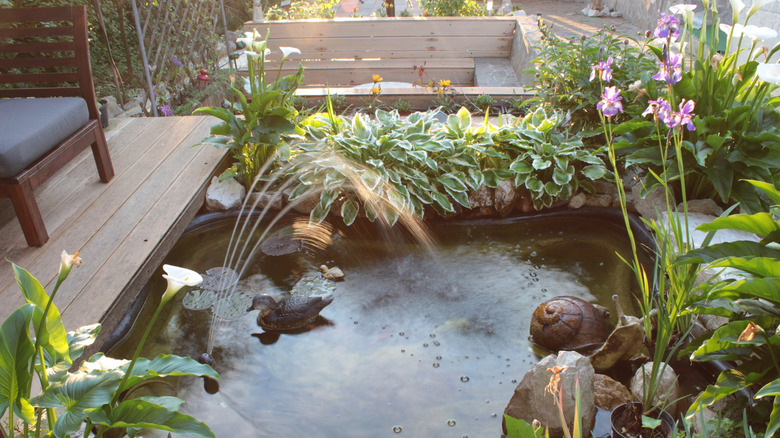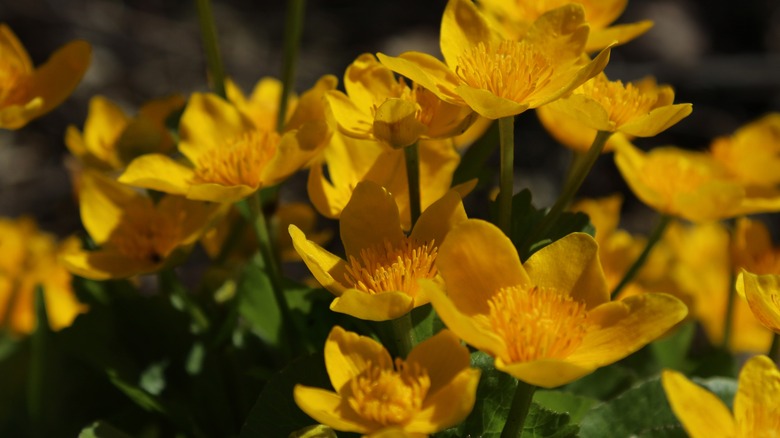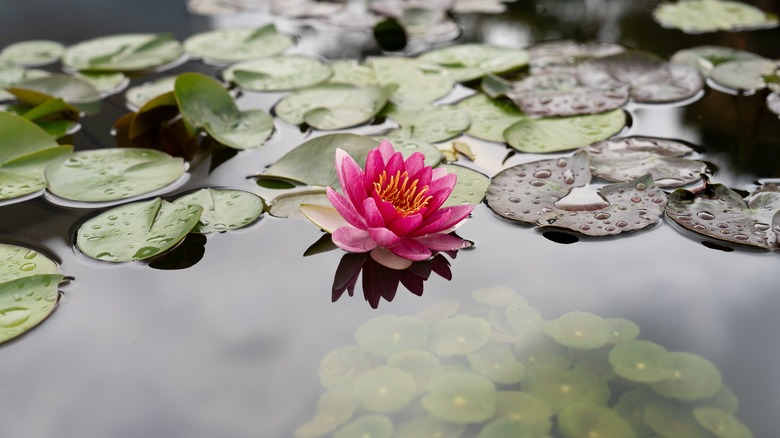How To Choose The Right Type Of Plant For Your Backyard Pond Edge
We may receive a commission on purchases made from links.
Apart from the environmental benefits of adding a pond to your garden, the magical pairing of plants and water creates a sweet haven of serenity that is simply enchanting. Choosing the right type of plants will not only add to the texture and beauty of the space you've created, but will also develop a healthy, balanced ecosystem that benefits all the living things in the area.
When choosing plants as a border for your pond, there are a few general guidelines to keep in mind. There are five depth zones surrounding a pond, and different plants thrive in each zone. By choosing a variety of plants across all five zones, you'll have beautiful growth to maximize the appeal of your pond. As you select plants, check to see what their expected size once grown will be and only choose those that will suit the size, shape, and location of your pond when fully grown.
Aim to cover about half the surface of the water with foliage. This prevents too much sunlight filtering through and prevents the growth of algae. Adjust this ratio if your pond is in a shady area of the yard, as the shadows cast by overhead plants have the same effect as surface floating plants do. Make sure you include oxygenators as these plants maintain the water quality of your pond. Avoid invasive plants as they can quickly disrupt the ecological balance. Consider fertilizing annually with granular Aquascape Once-A-Year Pond Plant Fertilizer to give your plants a boost.
Add bogs and marginals: from soggy toes to 16 inches deep
Tip-toeing around the edges of the water are the zone 1 bog plants. (Note: depth zones are different from USDA hardiness zones.) These plants love soggy soil and can be planted in damp soil or in water to a depth of 6 inches. A bright, cheerful plant to consider for the outer edges is the Caltha palustris or marsh marigold. Plant these gorgeous spring flowers to bring beneficial bees to your yard and enjoy buttercup shaped flowers gracing the edges of your pond with their sunny blooms. While they're not fond of summer's heat, they'll reemerge in autumn for a second round of blooms.
Zone 2 plants are known as marginal plants. They thrive in water up to 6 inches. If you're planting in zone 2 around the back edge of your pond, choose taller plants such as the Saururus chinensis or Chinese lizard tail. This perennial grows 12-36 inches tall and boasts papery green leaves with white center splotches on the upper leaves. It produces long curved spikes of small cream flowers that mimic a lizard's tail. It does well in USDA zones 4-9.
Deep marginal plants, zone 3, are those that grow in water depths between 6 and 16 inches. The Ludwigia sedioides Mosaic Flower is a geometric stunner! This sun-loving emergent forms red-tipped, diamond-shaped leaves that grow in mosaic patterns on the water surface. Plant them in Emsiok Aquatic Pond Planting Bags using heavy loam soil. This one is suited to USDA zones 10-11.
Floaters and submergents: the power team of pond life
The last two groups of plants are the deep water submerged plants of zone 4 and the surface floaters of zone 5. Submergent plants are the underwater powerhouses of a pond as they oxygenate the water. They thrive in water deeper than 16 inches. Floaters are valuable for filtering sunlight to control algae growth and stabilizing the temperature in your pond. Floating plants can be free floaters with no underwater stem system, trailing floaters that spread from where they're rooted in the shallows, or submersed plants with surface floating leaves.
The Vallisneria americana water celery grows underwater in gravelly aquatic substrate. Its graceful ribbon-shaped leaves grow in attractive clumps. Diving ducks love this underwater snack. For smaller ponds, consider planting it in baskets to prevent runners from spreading widely. You'll be rewarded with single white flowers that break the water's surface from the middle of spring to end of summer. It's suitable for USDA zones 4-10.
Consider adding an iconic pond floater, the Nymphaea 'Atropurpurea', better known as the water lily. They add an exotic touch to a pond with their showy star-shaped flowers and purple-green leaves. This hardy plant grows well in medium or large ponds and will flower regularly over an extended time. Plant it in clay soil such as the Doter Aquatic Soil for Plants. You may also be interested in how to grow and care for lotus flowers (& the best seeds to shop for) as they're another pond icon.


